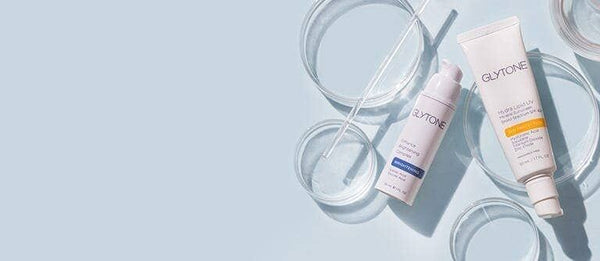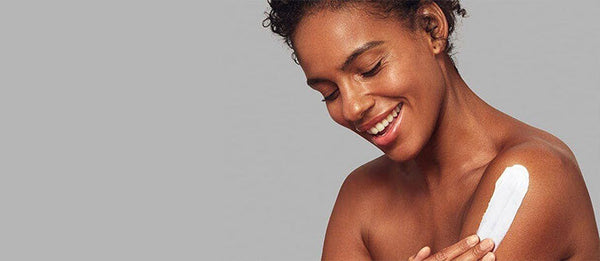What Is a Chemical Peel and Why Get One?

A chemical peel is a skin-smoothing procedure that in which an exfoliating chemical is used to remove the top layer of skin. There are three categories of chemical peels based on how deeply the chemical permeates the skin. Each category can help with a variety of skin conditions.
Superficial chemical peels permeate only the topmost layer of skin, the epidermis. These can be used to reduce the appearance of fine lines and wrinkles, unclog pores and treat mild acne, improve skin tone by reducing hyperpigmented areas, and promote skin hydration. Light peels can be used as an in-office maintenance treatment as often as every two to five weeks.
Medium depth chemical peels penetrate the epidermis and part of the next layer, called the dermis. For this reason, they should only be done by a professional aesthetician or dermatologist. Medium chemical peels can treat more pronounced wrinkles, acne scars, and uneven skin tone. They may need to be repeated several times in a series to obtain the desired effect and can be used regularly for maintenance every 3 to 9 months.
Deep chemical peels travel into the mid to lower layers of the dermis and are used to treat moderately deep wrinkles and scars. Deep chemical peels can only be performed by a dermatologist. They can be repeated but just not as frequently as other types of peels.

GLYCOLIC ACID PEEL
Glycolic Acid is the most common alpha hydroxy acid peel. It is safe, non-toxic, and well-established, having been used by dermatologists for years. It is used in concentrations of 30% to 70% for light and medium depth peels. Also 50% Glycolic Acid can visibly reduce fine lines, wrinkles and photo-damage while increasing hydration, plumping skin, and improving overall texture and tone.
The higher the concentration of Glycolic Acid the lower the pH value will be. Lower concentrations with shorter application times are used for light peels while higher concentrations with longer application times are used for medium peels. In all instances a lower strength is used initially and increased gradually in subsequent peels. A minimum of two weeks between peels is required for optimal healing and regeneration.

MANDELIC ACID PEEL
Mandelic Acid is an alpha hydroxy acid derived from bitter almonds. It has been used in medicine for many years as an antiseptic and more recently has gained popularity as a chemical exfoliant. Mandelic Acid works by dissolving the biological cement that holds skin cells together and by stimulating collagen production and promoting cellular regeneration. Formulated for redness-prone, sensitive and reactive skin, this chemical peel ingredient retexturizes skin and soothes redness for a calm, more even complexion. Mandelic Acid is also safe for darker skin types.

SALICYLIC ACID PEEL
A beta hydroxy acid, Salicylic Acid is lipid soluble, which makes it particularly useful for treating oily or acne-prone skin. Salicylic Acid has anti-inflammatory and antibacterial properties that help reduce oil production, break down acne blemishes and prevent clogged pores by slowing the shedding of skin cells within the pores. It is also considered a keratolytic, a compound that helps even skin texture by softening the protein keratin and reducing thickened or scaly areas of skin. Salicylic Acid can visibly reduce the appearance of mild to severe acne, on the face, back or chest, while improving skin clarity, texture and tone. Concentrations below 30% are available in over-the-counter light peel products but higher concentration Salicylic Acid peels can only be obtained through a dermatologist.

JESSNER PEEL
The Jessner peel is considered a medium-depth peel. It helps minimize the appearance of mild to moderate hyperpigmentation and improve the appearance of oily, blemish-prone skin. Jessners' solution combines beta-hydroxy Salicylic Acid with alpha hydroxy Lactic Acid and Resorcinol.
- Lactic Acid is an alpha hydroxy acid that, in addition to exfoliating and smoothing the skin, at higher concentrations inhibits melanin production, giving it skin-brightening effects.
- Resorcinol is derived from phenol, an acne medication and exfoliant. Resorcinol works by breaking bonds that hold keratin molecules together. It has skin-brightening and antiseptic effects.

Dermatologist Tips for Pre & Post Treatment Care
Pre-Treatment
CLEANSE, EXFOLIATE AND TONE
To minimize excess oil and remove dead skin cells to improve peel absorption.
AVOID
Facial scrubs, waxing, bleaching, microdermabrasion, laser hair removal and topical retinoids for at least 1 week before a chemical peel to prevent post-inflammatory hyperpigmentation and scarring.
Post-Treatment
PROTECT AND HYDRATE
Replenish the skin post-peel with moisture-rich sunscreen formulas with SPF 30 or higher.
APPLY
A protective ointment and/or ice packs to soothe the skin.
AVOID
Direct sun exposure, facial scrubs, abrasives, picking at the peeling skin, steam inhalation therapy, and exfoliating creams.

When to Talk to Your Dermatologist
- You are unable to achieve your skin care goals using an at-home chemical peel.
- You experience an allergic response or skin irritation after using a chemical peel.
- To get professional advice on the best approach for your skin type and symptoms.



